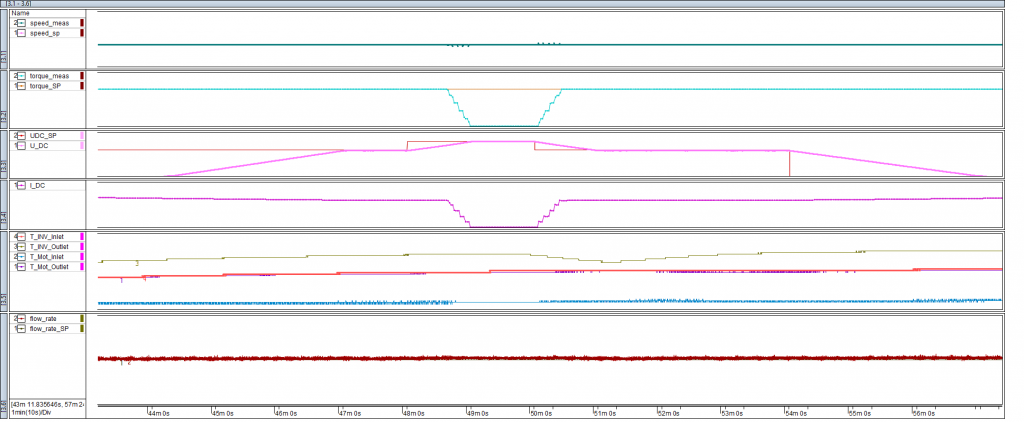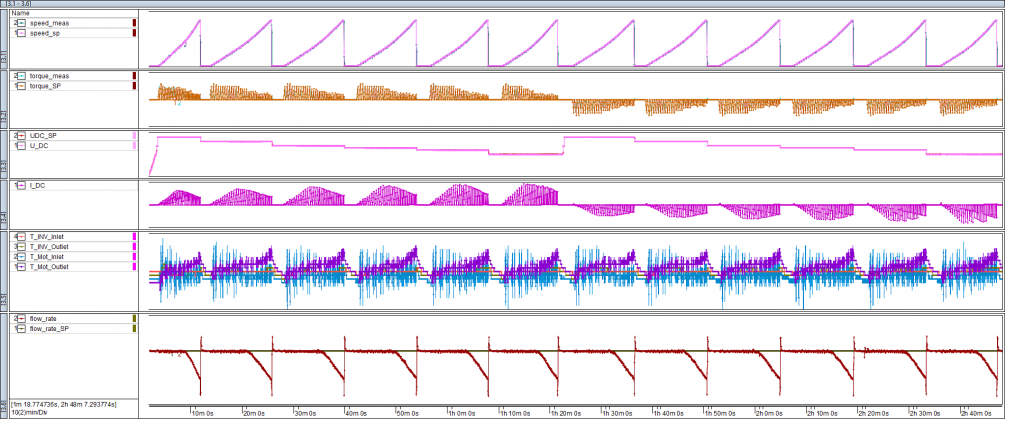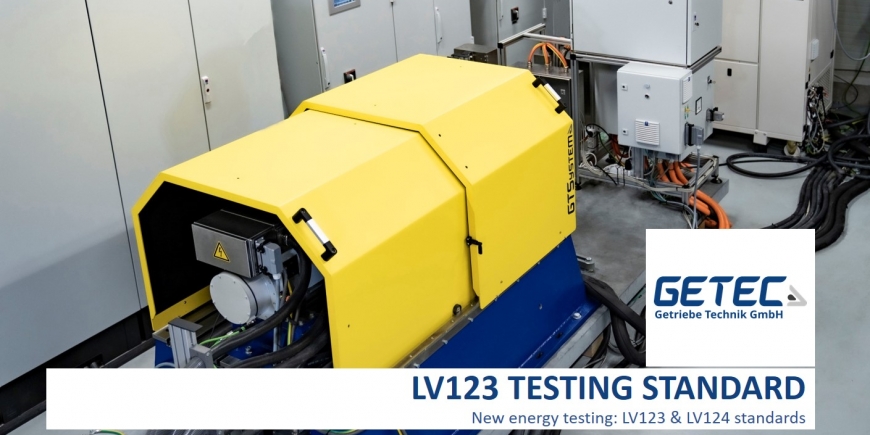LV123 TESTING STANDART
AUTHOR: Mr. Janagan Kanesamoorthy
Senior Application Engineer
The LV 123 standard can be applied to the inverter as a single device, the electric motor or the entire powertrain. The test standard is divided into two parts. The aim of the first tests is to verify the system performance over the entire operating high voltage and temperature range in the continuous operating range. The high voltage starts at 0 and goes up to 1000 V (depending on customer requirements). The test setup must maintain an ambient temperature range of -40 °C to 85 °C and a coolant temperature range of -25 °C to 85 °C.
GETEC uses a Vehicle Energy System (VES) either in individual operation or in parallel operation for higher power requirements. The possibilities are listed in Table 1.

Tab. 1 | GETEC VES capabilities
The test case for the upper limit of the operating capacity for a specific high-voltage range is shown in Figure 7 as an example. The purpose of this test is to verify the performance of the inverter over the full voltage and temperature range in the upper limited HV voltage range.

Fig. 7 | HVDC Voltage upper limit operating capability
The cycle is repeated three times and the inverter has to adjust its performance according to the HVDC setpoint. It is obvious that the inverter will limit its performance when the high voltage exceeds the upper limit and recover when the high voltage falls below the limit. The entire cycle runs automatically after the test bench control software has been programmed according to the LV123 specification. In this test case, the target temperature of the cooling circuit was set to -22 °C for the inverter input temperature.
Another test is performed to prove that the HVDC voltage is measured by two independent measurement paths and to verify them against each other. The inverter operates at 6 different HVDC voltages up to maximum speed with its maximum capabilities. Figure 8 gives an overview of the test cycle with the maximum torque and the maximum speed for generator and motor operation of the inverter.

Fig. 8 | HVDC Voltage plausibility check in motor and generator mode up to maximum speed and 6 different HVDC levels
The automatic test bench skips the target value when the limit value of the inverter is reached. This test cycle is performed with a coolant temperature of 65 °C at the inverter input. During the test cycle, the test bench automation monitors the critical parameters of the inverter and the e-motor to safely shut down the system in the event of an incident and to prevent damage to the test setup (see Figure 9).

Fig. 9 | HVDC Voltage plausibility check with the inverter working at its limits
The advanced automation system of the GETEC test benches allows the already implemented test cycle to be quickly adapted to new devices to be tested. This allows customers to see the results
